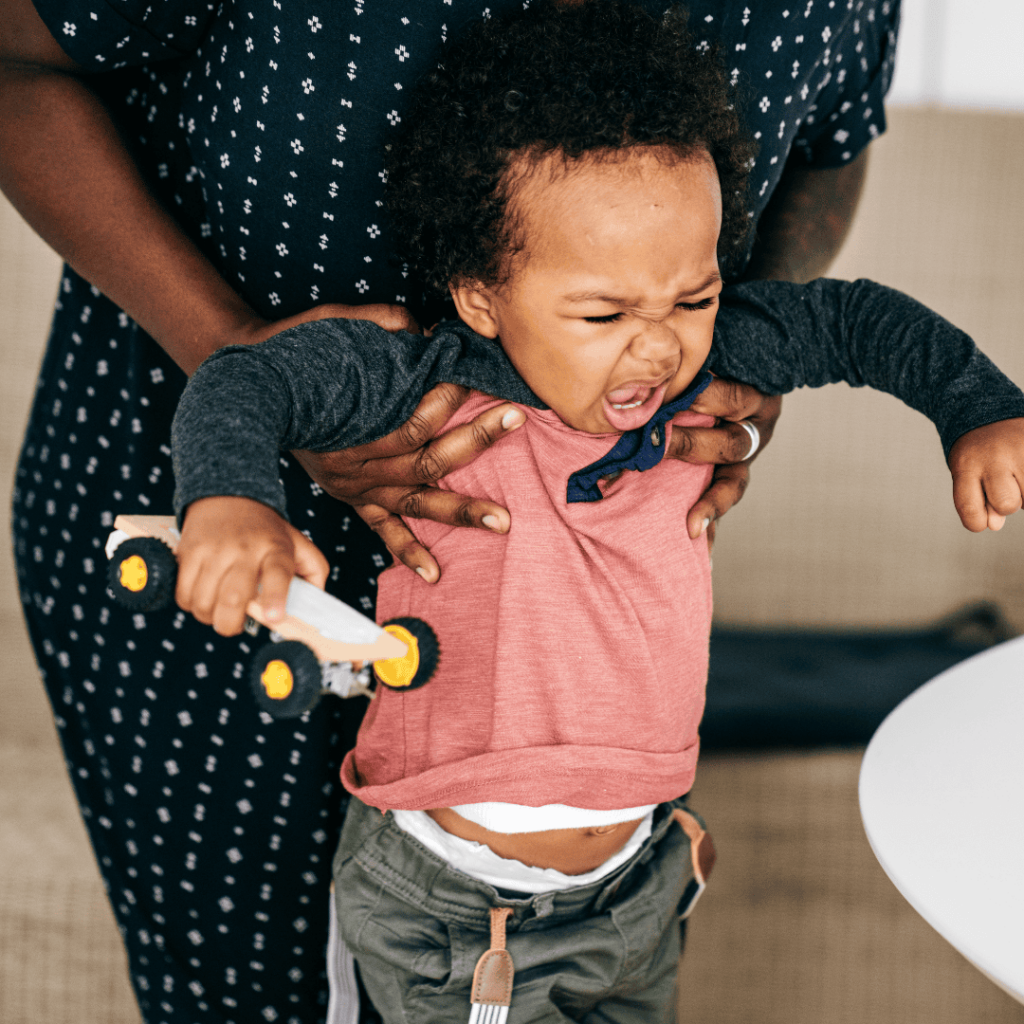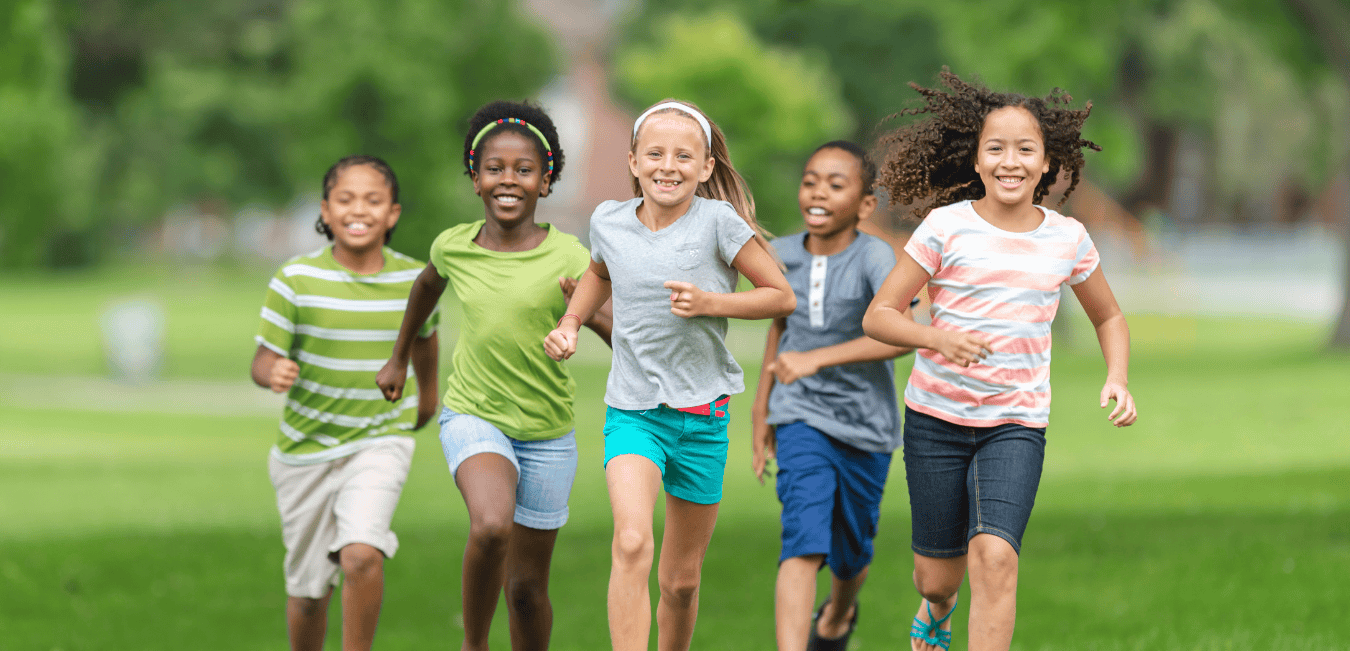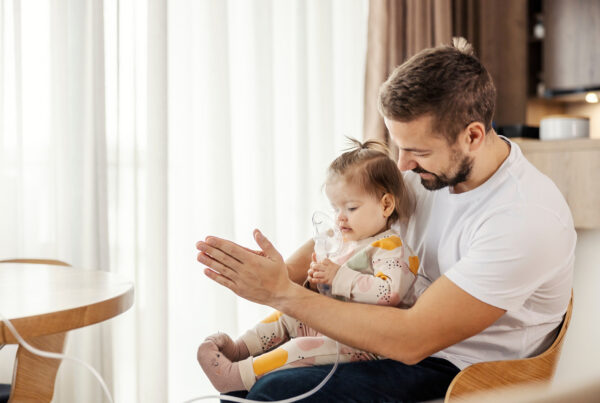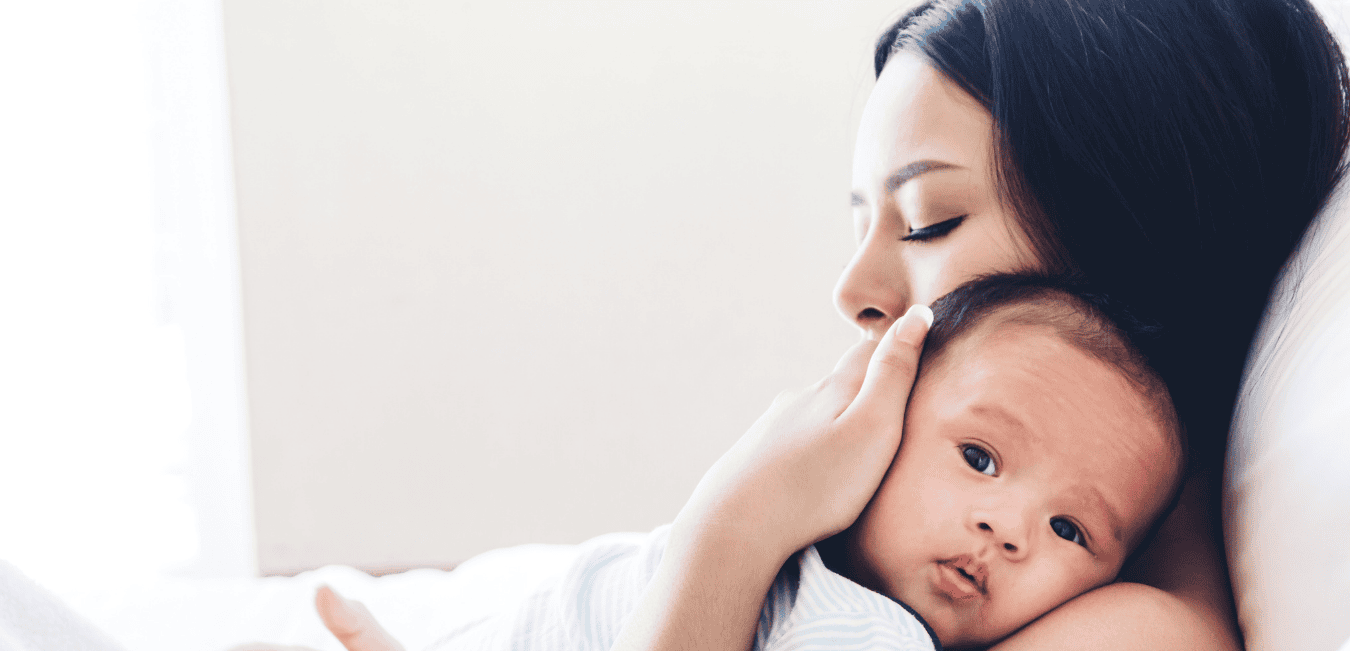Sometimes we can see that our kids are struggling with stress when they are more irritable, clingy, tired, or withdrawn than usual. Every child is different, and it helps to experiment with stress relief strategies to find which ones help shift them out of stress and into living and growing without the weight of the world on their shoulders. What follows are some stress relief strategies for children that I’ve learned from my training and research, wise parents in my life, and my own kiddos.
If you’re looking for information about anxiety in kids, I have articles that specifically cover anxiety:
6 Strategies To Support A Child Struggling With Anxiety – Dr. Green Mom
Symptoms of Anxiety In Children – Dr. Green Mom
Kangaroo Care and Co-Regulation
Kangaroo care is the first type of co-regulation that many parents learn about. By keeping our babies in skin-to-skin contact, our system helps to regulate and stabilize our babe’s. As kids grow, there is less of a physical connection, but the mental and emotional connection grows. By staying emotionally present, grounded, and close to our kids during stressful situations, we can help them regulate their own nervous systems so that they don’t stay stuck in a stress response.
If you are looking for more information about co-regulation, this document gives concrete examples of ways to co-regulate with your child at all ages and stages: Co-Regulation From Birth Through Young Adulthood: A Practice Brief
Time In Nature
Time in nature benefits people of all ages from babyhood to old age. It helps with physical, mental, and emotional stress. If you can’t get outside, looking at photos of natural landscapes and/or listening to nature sounds is still beneficial, though less than spending time outdoors.
Play (Especially Adventurous Play)
A good play session can be as rejuvenating for kids as a trip to the spa can be for moms. While most kinds of play are good for improving mental health, emotional control, and executive functioning, adventurous play in particular seems to help children regulate stress and anxiety when they have opportunities to engage in it regularly over time. Adventurous play includes things like riding bikes fast, climbing trees, and anything that feels exciting or thrilling. It is important to balance adventure with safety and to let the child lead the way (rather than pushing them to do something adventurous that they aren’t ready for).
Meeting Sensory Needs
Each and every one of us has sensory needs. Some of us have a wide comfort zone when it comes to sensory stimulation and some of us have a narrow one. It is much more likely that we have a narrow comfort zone for sensory stimulation when neurological conditions like ADHD or autism are present and the same goes for kids. Each child is different and their needs will vary day-to-day. Some strategies to help children meet their sensory needs are: creating a sensory toolkit, helping them find ways to recognize and communicate that they need a break if overwhelmed, and designating a quiet space, non-stimulating place for rest and recovery.
Just Add Water
“Just add water” is advice I’ve gotten from some wise mamas in my life and it rarely fails. If your child is having a rough day, find a way to add water. It can be having a drink of water, a water fight, a bath, a swim, a trip to the beach, or anything that you can think of. I don’t have research to back this one up, but in my life I’ve found that stressed kids respond really well to water.
Anti-Inflammatory Diet
Eating sweet, carb-heavy foods can create a temporary spike in serotonin leading to a more calm and regulated emotional state. I don’t recommend leaning on sweet foods to help deal with stress because this can create bad habits and emotional eating patterns later in life. However, sometimes our kids get stressed and reactive when their blood sugar dips and they haven’t eaten enough. For these reasons, giving a stressed child a snack can be a great idea, especially if it seems like they are “hangry.” When possible, opt for healthy snacks that abide by the principles of anti-inflammatory eating and prevent “hanger” episodes by having regular mealtimes and emphasizing foods high in protein, fat, and fiber. Diet quality has a huge impact on stress and mental health, so when possible avoid the quick fix and focus on the big picture when it comes to food.
Predictable Routines (Especially Around Meals, Sleep, and Transitions)
Routines help reduce stress for parents and for kids. Children really like to know what is coming next. If routines are tricky in your home, creating a visual schedule might be helpful, especially for small children. Letting kids have some input into creating routines can be really eye opening: they can often let you know which parts are tripping them up and come up with ideas for how things can run more smoothly.
Modeling Healthy Stress Management
Our kids’ stress responses often mirror our own as parents and it’s important that we show leadership in our families by managing our own stress. Self-care and therapy can be helpful, but ultimately each of us have to figure out what works best individually.
Nutraceutical Support For Stress
We live in stressful times and sometimes lifestyle just isn’t enough to manage stress. When I see children who have difficulty dealing with stress in my practice, the first thing that I check into is whether or not they are getting all the nutrients that they need for their neuroendocrine systems to function optimally. This usually involves adding a high quality multivitamin and omega 3 supplement to complement the nutrients that they’re getting in their diet. Optimal gut health and probiotic support are both important for a healthy neuroendocrine system as well.
Summary
It can be tough to see our kids struggling with stress, but luckily there are lots of strategies available to help. Each child is different and it will take some trial and error to find what works best at different ages and stages. With your help, your kids will develop loving connections, emotional regulation, and life skills that will help them manage the inevitable stresses that life will bring their way.
References:
Tillmann, S., Tobin, D., Avison, W., & Gilliland, J. (2018). Mental health benefits of interactions with nature in children and teenagers: a systematic review. Journal of epidemiology and community health, 72(10), 958–966. https://doi.org/10.1136/jech-2018-210436
Dodd, H. F., Nesbit, R. J., & FitzGibbon, L. (2022). Child’s Play: Examining the Association Between Time Spent Playing and Child Mental Health. Child psychiatry and human development, 1–9. Advance online publication. https://doi.org/10.1007/s10578-022-01363-2
McCormick R. (2017). Does Access to Green Space Impact the Mental Well-being of Children: A Systematic Review. Journal of pediatric nursing, 37, 3–7. https://doi.org/10.1016/j.pedn.2017.08.027
Zahedi, H., Kelishadi, R., Heshmat, R., Motlagh, M. E., Ranjbar, S. H., Ardalan, G., Payab, M., Chinian, M., Asayesh, H., Larijani, B., & Qorbani, M. (2014). Association between junk food consumption and mental health in a national sample of Iranian children and adolescents: the CASPIAN-IV study. Nutrition (Burbank, Los Angeles County, Calif.), 30(11-12), 1391–1397. https://doi.org/10.1016/j.nut.2014.04.014
Feio, M. J., Mantas, A. I., Serra, S., Calapez, A. R., Almeida, S., Sales, M. C., Montenegro, M., & Moreira, F. (2022). Effect of environmental education on the knowledge of aquatic ecosystems and reconnection with nature in early childhood. PloS one, 17(4), e0266776. https://doi.org/10.1371/journal.pone.0266776
Akbari, E., Binnoon-Erez, N., Rodrigues, M., Ricci, A., Schneider, J., Madigan, S., & Jenkins, J. (2018). Kangaroo mother care and infant biopsychosocial outcomes in the first year: A meta-analysis. Early human development, 122, 22–31. https://doi.org/10.1016/j.earlhumdev.2018.05.004
Nijhof, S. L., Vinkers, C. H., van Geelen, S. M., Duijff, S. N., Achterberg, E., van der Net, J., Veltkamp, R. C., Grootenhuis, M. A., van de Putte, E. M., Hillegers, M., van der Brug, A. W., Wierenga, C. J., Benders, M., Engels, R., van der Ent, C. K., Vanderschuren, L., & Lesscher, H. (2018). Healthy play, better coping: The importance of play for the development of children in health and disease. Neuroscience and biobehavioral reviews, 95, 421–429. https://doi.org/10.1016/j.neubiorev.2018.09.024
Hu, C., Zhu, K., Huang, K., Yu, B., Jiang, W., Peng, K., & Wang, F. (2022). Using natural intervention to promote subjective well-being of essential workers during public-health crises: A Study during COVID-19 pandemic. Journal of environmental psychology, 79, 101745. https://doi.org/10.1016/j.jenvp.2021.101745
Dodd, H. F., & Lester, K. J. (2021). Adventurous Play as a Mechanism for Reducing Risk for Childhood Anxiety: A Conceptual Model. Clinical child and family psychology review, 24(1), 164–181. https://doi.org/10.1007/s10567-020-00338-w
Fernstrom J. D. (1988). Carbohydrate ingestion and brain serotonin synthesis: relevance to a putative control loop for regulating carbohydrate ingestion, and effects of aspartame consumption. Appetite, 11 Suppl 1, 35–41.
Stress in Children: Signs, Symptoms and Strategies








